Although Canada Makes is not as famous as America Makes in the additive manufacturing industry, its professionalism is not average. Canada Makes has issued a guideline for the manufacture of metal additive materials for the current market situation of additive manufacturing. This guide is a guide for the additive manufacturing industry and can be said to be a rare guide. 3D Science Valley brings you the fascinating value of additive manufacturing through a large number of examples of rapid prototyping and molds, spare parts, parts integration, and multi-function precision parts.
Level 0: Rapid Prototyping and Prototype and Tooling
Case: Aerospace Prototype / Prototype Aero
Metal additive manufacturing is limited by size, and large aerospace components cannot achieve one-time additive manufacturing, and components can be divided into multiple parts. For example, in the case of a petal-shaped housing in the figure, each "petal" is printed separately, so that it can be assembled into a larger diameter component.

Image source: Canada Makes
Case: New Product Prototype / Prototype New Product
When new products enter the market, they face barriers and barriers to entry. Innovative designs need to be constantly tested, but if the prototype is produced by traditional mold opening, the cost of the prototype is very expensive and the development cycle is long. Additive manufacturing opens up a shortcut to production for such a prototype.
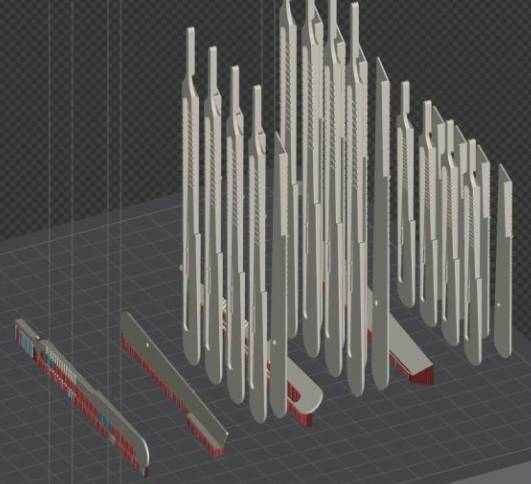
Image source: Canada Makes
Case: With cold mold / Tooling
The mold temperature directly affects the quality and production efficiency of the injection molded product. Conformal cooling is the preferred method for complex mold design. If the cooling water path is closer to the mold surface, the heat accumulated in the mold is greatly reduced, and the heat is limited to cooling. The area between the waterway and the surface of the mold. In the figure, the Martensitic iron with a hardness of 52-54HRC is designed to conform to the water surface of the wall surface, which has the cooling effect unmatched by the traditional waterway and improves the production efficiency. The distributed and balanced waterway design provides superior cooling consistency, ensuring uniform cooling of the final product and improved product quality.
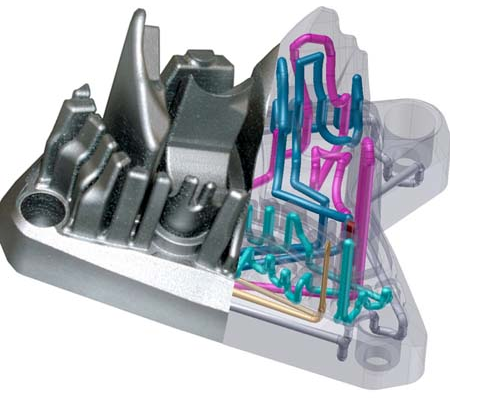
Image source: Canada Makes
Case: Mold / Tooling
The parts of the complex rod locator can be machined in the traditional way, but the welding and assembly required will be very complicated, and the complexity means that the additive manufacturing may be more advantageous and faster, and in the disposable mold The manufacturing aspect is cost effective.
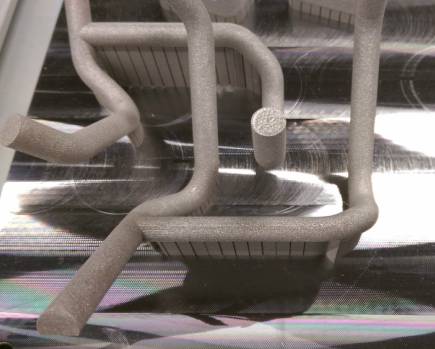
Image source: Canada Makes
Case: Fixture/Fixturing
In a fast production environment, the casting process of the casting needs to be checked. The fixing fixture for the casting is manufactured by additive manufacturing technology, and the positioning and clamping portions are completely customized.
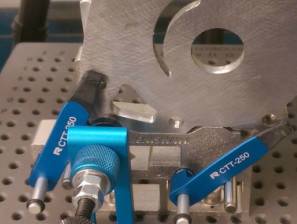
Image source: Canada Makes
Level 1: Spare Parts / Replacement Parts
Case: Connector / Engine Fittings
Usually for parts that are not very critical, when there is a need to replace the fault, when these parts are not popular, there are not many stocks to choose from, you can consider replacing them by means of additive manufacturing, and the speed is fast and the cost per piece low.
3D Science Valley believes that of course, there is no new supply chain to improve the spare parts system through additive manufacturing. However, Boeing has applied for a patent. The "virtual inventory" of these parts is managed by a database of their part models. When these parts have problems that need to be replaced, the database sends the part's model to the 3D printer to make it. Of course, the current parts of Boeing in service are mainly plastic parts.
Image source: Canada Makes
Case: Structure / Structures
The aerospace industry knows that in the processing of structural parts, traditional processes need to achieve a large margin of material removal of up to 70% to 90%, which is a huge waste for expensive materials. A calculation by GKN Airlines is a straightforward representation of the metal materials saved by structural components. A structural member of 0.77 kg is processed in a conventional manner. Taking a 4.85 kg cube as an example, it is necessary to remove 4.08 kg of iron filings. 1.08kg of powder is required to be processed by additive manufacturing. Of course, the surface needs to be finished by conventional methods after processing, so that 0.31kg of metal is removed on this basis. Compared to the waste of 4.08kg, the waste of 0.31kg only accounts for less than 10% of the waste.

Image source: Canada Makes
Case: Medical / Medical
Conventional machine tools require small diameter tools for processing small pieces of medicine. These small tools are not very rigid because the amount of removal is very light, the machining time is usually very long, and the life of the tool is usually short and Uncertain surface accuracy. Additive manufacturing can produce very sophisticated products with clear advantages in the medical and dental fields.
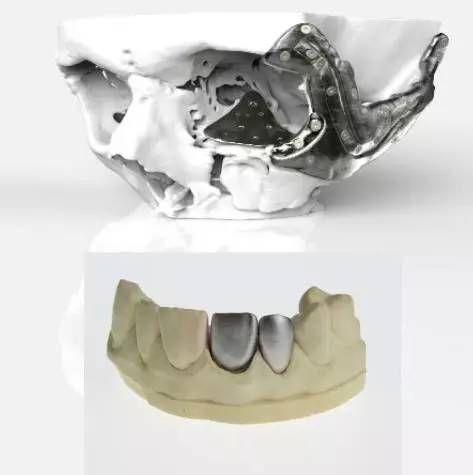
Image source: Canada Makes
Case: Implant
Implant Case Study
Mirco-CT: 154um resolution can be obtained with GE's Locus Ultra micro CT scan, which can be used to generate 3D mesh models of bones and implants. By precisely controlling the cross-sectional profile, the 3D printing technology can effectively realize the simultaneous reconstruction of the external contour and the internal structure, so that the height matching between the implant and the patient's local anatomy can be fully satisfied. The combination of pre- and post-processing can further reduce the waiting time. 3D Science Valley believes that the manufacture of individualized implants can also avoid long waits and manufacturing costs.
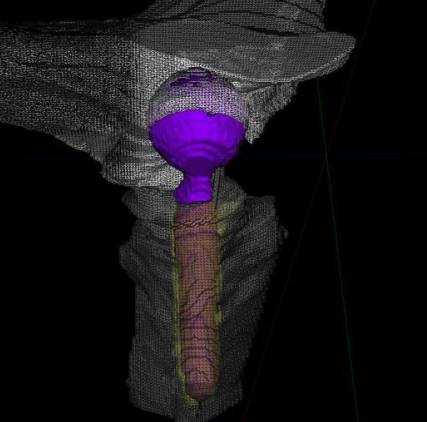
Image source: Canada Makes
Level 2 Part Integration / Part Consolidation
Case: Heatsink / Heat Exchanger
Conventional radiators require a large number of components that can be integrated together in one incremental manufacturing process, reducing the number of suppliers, reducing the number of logistics processes and worker assembly requirements, and eliminating the need for welding and assembly. Improve the stability and efficiency of the components.
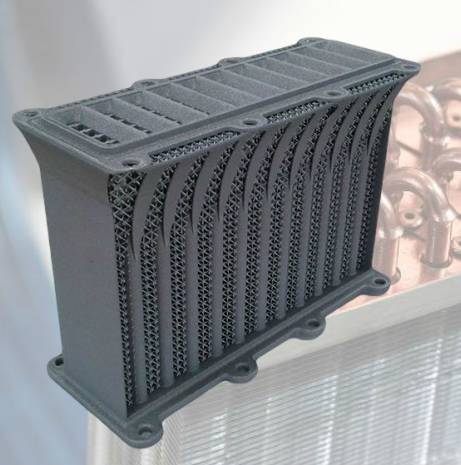
Image source: Canada Makes
Case: Space Communication / Waveguide
Space communication microwave equipment needs to be as light as possible because the launch cost is about $1,000 per kilogram. Conventional components are manufactured using a reduced material method (including EDM), which requires a large number of parts for complex parts, and subsequent assembly by screws, and the screws themselves add weight. Additive manufacturing provides a solution to complex internal passages, and topology optimization and finite element simulation strike a good balance of functionality and complexity of additive manufacturing components.
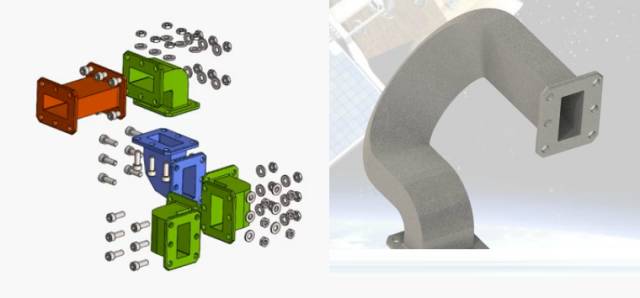
Image source: Canada Makes
Case: Bicycle / Bicycle
The components of the bicycle can show the advantages of additive manufacturing in the integration of parts. In this case, the original 2.1kg part combination was reduced to 1.4kg by means of additive manufacturing. And in addition to the weight reduction, the overall performance has also been improved.
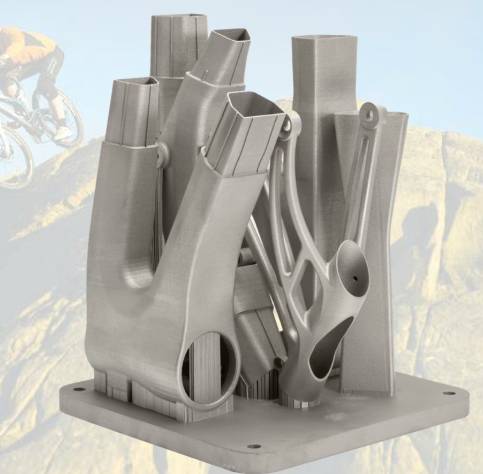
Image source: Canada Makes
Case: Manifold / Manifold
Additive manufacturing is especially suitable for products with complex internal passages. The hydraulic manifold in the case not only integrates multiple parts into one component, it also improves low-pressure fluid performance and provides better thermal fluid performance.

Image source: Canada Makes
Level 3 Multi-Functional Precision Parts / Multiple Performance Benefits
Case: GE Fuel Nozzle / GE Fuel Nozzle
Through more than 10 years of exploration, GE has continuously optimized, tested, and re-optimized the design of injectors by reducing the number of parts of the injector from more than 20, and improving the fuel injection through additive manufacturing. The problem of overheating and carbon deposits in the mouth increases the life of the injector by a factor of five and will improve the performance of the LEAP engine. 3D Science Valley believes that this brings the role of additive manufacturing to a new milestone, not limited to a cheap or fast discussion level, but a great improvement in overall performance and economic efficiency.
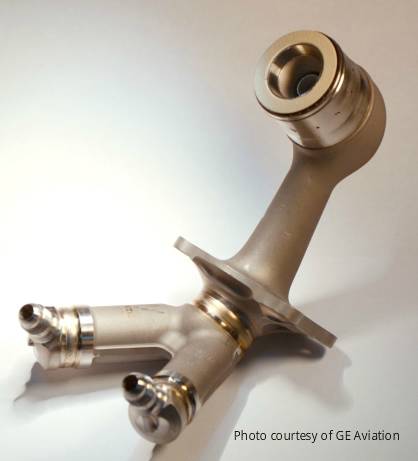
Image source: Canada Makes
(Editor)
Wire Spring,Double Torsion Spring Design,Spring Steel Wire,Stainless Steel Spring Wire
OEM order and ODM order can is welcome
wire thickness : 0.07--5mm
applicaiton: viation,automotive, motorbike, bicycle, automatic equipment, household appliance, medical device ,toy, telecommunication,computer, instrument and meter,furniture, electric tools,mold and other industries
Wire Spring,Double Torsion Spring Design,Spring Steel Wire,Stainless Steel Spring Wire
Shenzhen Lanejoy Technology Co.,LTD , https://www.szcoolingrack.com